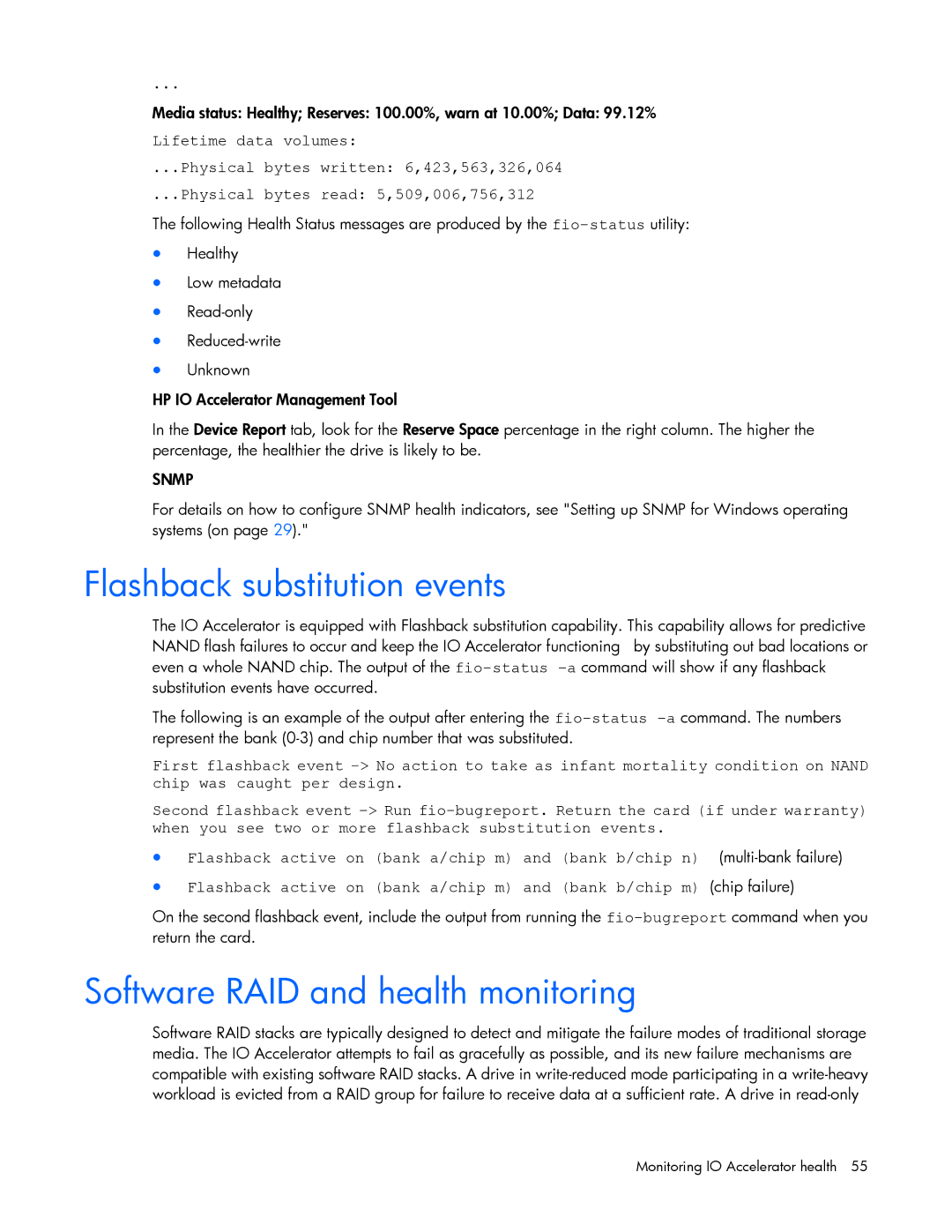...
Media status: Healthy; Reserves: 100.00%, warn at 10.00%; Data: 99.12%
Lifetime data volumes:
...Physical bytes written: 6,423,563,326,064
...Physical bytes read: 5,509,006,756,312
The following Health Status messages are produced by the
•Healthy
•Low metadata
•
•
•Unknown
HP IO Accelerator Management Tool
In the Device Report tab, look for the Reserve Space percentage in the right column. The higher the percentage, the healthier the drive is likely to be.
SNMP
For details on how to configure SNMP health indicators, see "Setting up SNMP for Windows operating systems (on page 29)."
Flashback substitution events
The IO Accelerator is equipped with Flashback substitution capability. This capability allows for predictive NAND flash failures to occur and keep the IO Accelerator functioning by substituting out bad locations or even a whole NAND chip. The output of the
The following is an example of the output after entering the
First flashback event
Second flashback event
• Flashback active on (bank a/chip m) and (bank b/chip n)
•Flashback active on (bank a/chip m) and (bank b/chip m) (chip failure)
On the second flashback event, include the output from running the
Software RAID and health monitoring
Software RAID stacks are typically designed to detect and mitigate the failure modes of traditional storage media. The IO Accelerator attempts to fail as gracefully as possible, and its new failure mechanisms are compatible with existing software RAID stacks. A drive in
Monitoring IO Accelerator health 55
